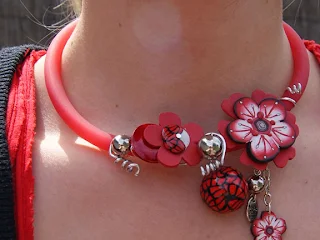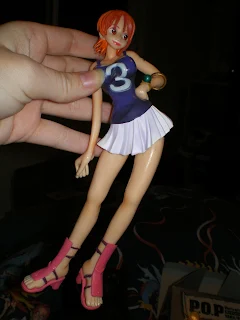Almost all of us knows that 90% of our figures are made of PVC, but few are who know the meaning of these three letters, and fewer are who know more about this awesome material! One Piece is cool, and science too! So let's know more about our beloved collection of figures!
For the inaugural article, We will explain the commonly used materials and their properties. I’m sure for the non-science/chemistry students, terms like PVC, ABS probably mean just various types of plastic. But what exactly are these and why is ABS used for bases while PVC for the actual figurine?
- Scientific Definition of Polyvinyl chloride:
Poly (vinyl chloride), commonly abbreviated PVC, is the third-most widely produced plastic, after polyethylene and polypropylene. PVC is used in construction because it is more effective than traditional materials such as copper, iron or wood in pipe and profile applications. It can be made softer and more flexible by the addition of plasticizers, the most widely used being phthalates (substances added to plastics to increase their flexibility, transparency, durability, and longevity). In this form, it is also used in clothing and upholstery, electrical cable insulation, inflatable products and many applications in which it replaces rubber.
- Discovery and production:
PVC was accidentally discovered at least twice in the 19th century, first in 1835 by French chemist Henri Victor Regnault (Pic1) and then in 1872 by German chemist Eugen Baumann (Pic2). On both occasions the polymer appeared as a white solid inside flasks of vinyl chloride that had been left exposed to sunlight. In the early 20th century the Russian chemist Ivan Ostromislensky and Fritz Klatte of the German chemical company Griesheim-Elektron both attempted to use PVC in commercial products, but difficulties in processing the rigid, sometimes brittle polymer blocked their efforts. Waldo Semon (Pic3) and the B.F. Goodrich Company developed a method in 1926 to plasticize PVC by blending it with various additives. The result was a more flexible and more easily processed material that soon achieved widespread commercial use.
PVC is one of the most common plastics used in the world. It’s quite similar to rubber and the toughness/malleability of PVC is dependent on the plasticizers added. More plasticizers = more softness, since they straighten out neatly the long macro-molecular polymer chains into neat rows. Some figure collectors complain of an oily film after a while and I would think this is due to the plasticizers migrating to the surface of the plastic. Small plasticizers molecules are pretty mobile and after a period of time, they accumulate on the surface to produce an oily crud.
A very large percentage of the figures sold are made of PVC. From gashapon, trading figures to 1/6s, these are mainly PVCs. Low material cost, easy of molding, ductility (it won’t break much, just bend) are the reasons why it is used.
Concerning the case of the big manufacturers that have quality control like Megahouse, they are using great quality PVC and they do care about every detail! If you keep watching your oldest POP figures, you'll realize that they are always in good conditions! Else, no one will sell Bellmer for more than 300$ now she's almost 10 years old! And that's why you should avoid bootlegs, they are made of the cheapest materials and the manufacturers of these fake figures do not care about the health regulations and security codes.
Thank you guys!
A very large percentage of the figures sold are made of PVC. From gashapon, trading figures to 1/6s, these are mainly PVCs. Low material cost, easy of molding, ductility (it won’t break much, just bend) are the reasons why it is used.
It's totally weird how figures can bend...
- Is PVC dangerous?
- I'm worried now! What should I do?
Concerning the case of the big manufacturers that have quality control like Megahouse, they are using great quality PVC and they do care about every detail! If you keep watching your oldest POP figures, you'll realize that they are always in good conditions! Else, no one will sell Bellmer for more than 300$ now she's almost 10 years old! And that's why you should avoid bootlegs, they are made of the cheapest materials and the manufacturers of these fake figures do not care about the health regulations and security codes.
Always avoid those horrible bootlegs.
- How to take care of my collection?
Safety Warning on some figure box.
- ABS (Acrylonitrile Butadiene Styrene):
Boa Hancock Ver. Gold Base, Lego pieces.
ABS is an amorphous thermoplastic blend. The recipe is 15-35% acrylnitrile, 5-30% butadiene and 40-60% styrene. Depending on the blend different properties can be achieved.
ABS is more expensive than PVC and is slightly lighter too. Its price is commonly used as the dividing line between common plastics like PVC and more expensive industrial plastics. ABS has a higher distortion temperature at 75 degrees. Its properties are also easily modified by varying the proportions of its components. Its natural color is an opaque ivory but dyes can be applied.
Next time, we will talk about how to take care of your POP Collection, how to maintain your figures and about some general possible fixes in case of break or bending. Stay tuned!



















![[AGF2025] Boa Hancock "Pirate Empress" - P.O.P A x MAXIMUM](https://blogger.googleusercontent.com/img/b/R29vZ2xl/AVvXsEidEc1om5sTlF6mCwC3jYfwIf9qSrQaSA58euKRHvxRYdnyu-KqSI1P8X7kDZK-yT1JpVrf0pVnz7YpU6uRNuq55dfrsMGCO2KJQJfCdZucUaizLmX2wrADtkZdWOUTM7Sacbd2zmDsMVn4EgmcwAH6ASCWQncS6cYw98R8fOUOSaEdbHde3gZyMlEPdOJc/w680/Boa%20Hancock%20AGF2025%2006-EDIT.jpg)


